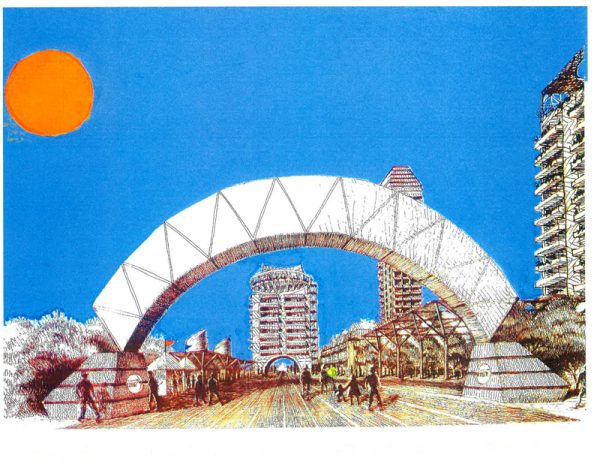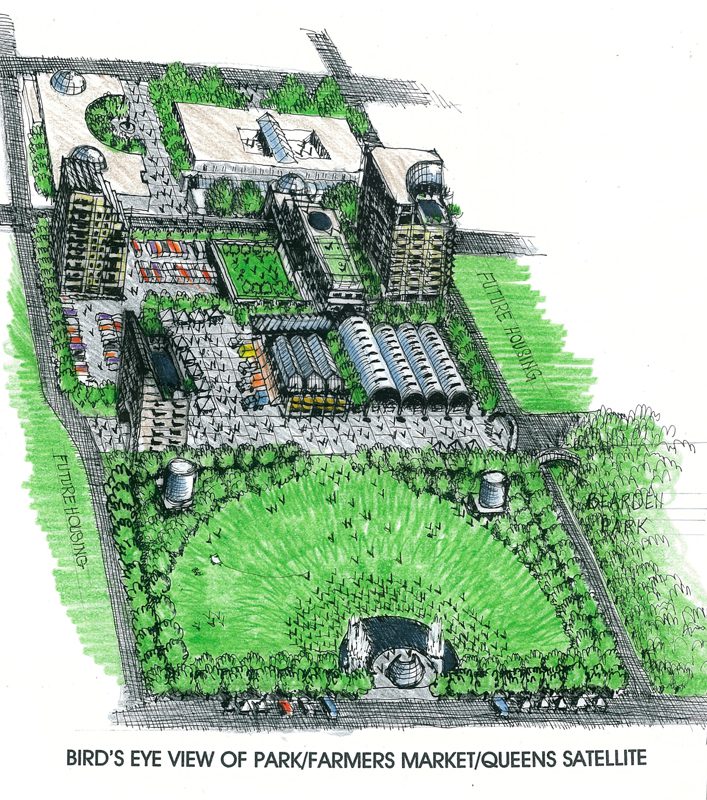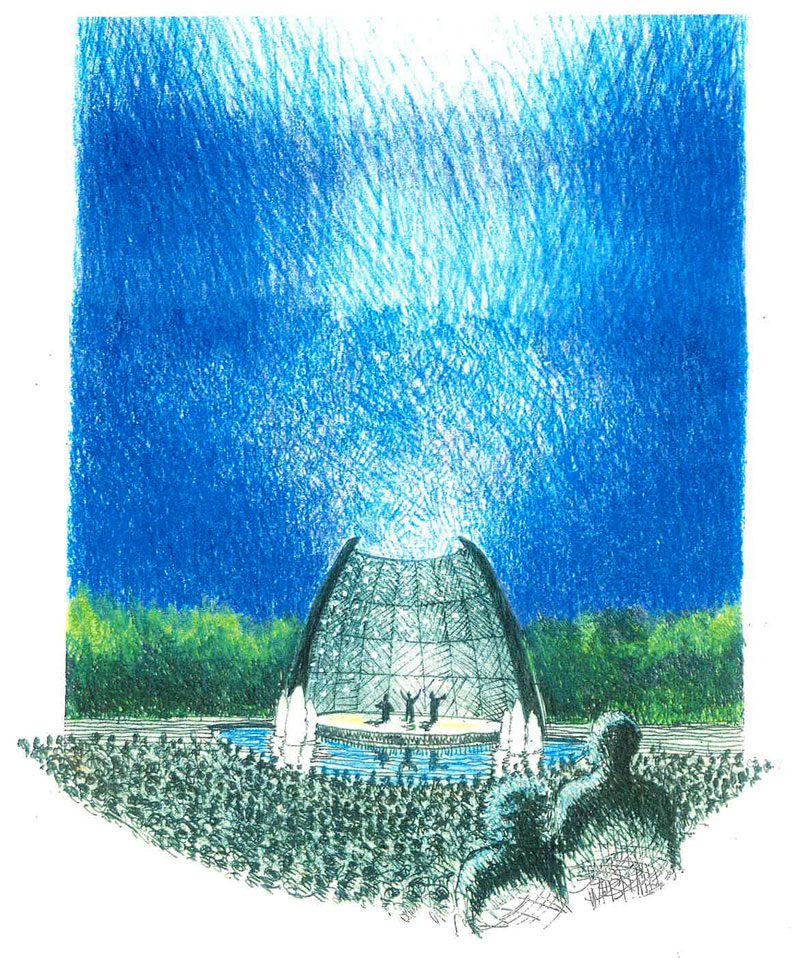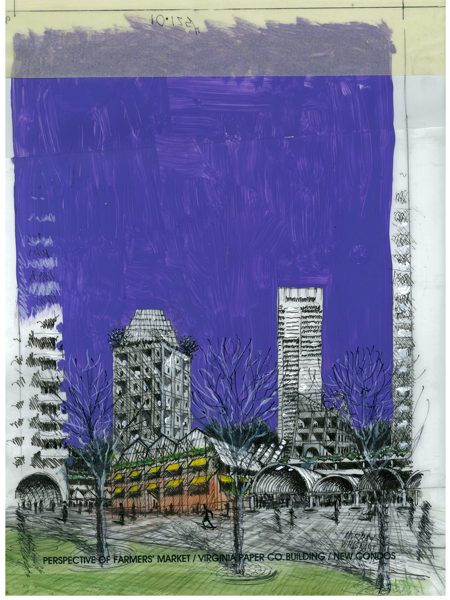Don’t squander chance for a great public park

This article opposes plans to build a new ballpark for the Charlotte Knights uptown. Read architect Marley Carroll’s article supporting the idea here.
Missing from recent discussions about granting more public money for a privately developed baseball park in Third Ward is any talk about the potential advantages of using the land for public purposes year-round.
“Public purposes,” of course, are what voters had in mind in 2004 when they voted to invest $24 million in this 8.6-acre tract in the center of our city. Four months after local voters expressed their wish for a public park, the privately owned Charlotte Knights baseball team expressed the wish to develop a for-profit stadium uptown. In the years since, the Knights have struggled with multiple financial schemes, lawsuits and an economy turned upside down. Our new, austere reality has required firing school teachers, closing libraries, trimming government services and raising taxes. That is the context of this discussion.
Mecklenburg history has given us an extraordinary opportunity to maximize the potential value of these acres for all of us, while bestowing great value on surrounding properties. And most city planners know that nothing attracts quality development like a park. It is miraculous that this Southern boom-city should have this much vacant land in the heart of the city. That is an amazing gift in these lean times, if we have the smarts to seize it.
The essence of this idea is that it can be accomplished incrementally. We only need to announce our intention. Even just sowing grass seed would be a good start, the start of a grass-roots movement. This is an idea that could benefit savvy business interests who might buy naming rights for different elements of the park as well as the entire park.
Promoters of the baseball park repeatedly refer to “creating memories” as a selling point. But a growing city like Charlotte needs to be looking forward. When I hear that “memory” refrain, it seems to be urging us to sit around in a glassy-eyed reverie of the past.
Baseball remains popular today, but unlike football and basketball, it has acquired just a whiff of reverence for things past. This city can’t prudently gamble on a contract that can extend from 50 to 100 years. The reality of spectator sports franchises has shown us time and again that if you build it, they may not come.
I want to make clear I am not what might be termed a “ ‘no’ person.” I favor sensible concepts that can enhance everyone’s quality of life, with no one having to buy a ticket.
And this is not an anti-baseball screed. As a child I had a “hero-uncle,” George Murray, who had been a pitcher for the New York Yankees. Uncle George took me to Charlotte Hornets minor league baseball games where Hornets gave me signed baseballs. They were a farm team for Clark Griffith’s Washington Senators. I think you can bet Griffith never got a dime of city money to build Griffith Park in what’s now South End.
This is a pitch against giving away taxpayers’ property for private gain.
Astute local political and business leaders are the reason we acquired this center city land. Some of those leaders have said they want to “brand” Charlotte as an energy hub.” To that end, what could be more powerful than announcing Charlotte’s intent to create, in the heart of our city, a public park with all the virtues we love in public parks but with the added distinction of it being designed as an “energy machine.” This Energy Park, as an energy machine, might discreetly use the sun’s sustainable gifts to power the equivalent of 200 energy efficient (LEED-certified) Habitat for Humanity houses. This “machine” might use 200 subterranean geothermal wells to supply power from deep in the earth to structures in our Energy Park.
Other renewable energy sources that would be feasible on site might be micro-turbines, wind turbines, cisterns collecting rain water for on-site irrigation and other already proven techniques. My colleagues and I are not just making things up; we’ve consulted with engineers at Optima Engineering on these concepts.
As we envision it, the park would of course provide amenities of a traditional urban park, including a quarter-mile runner’s track; strollway; picnic space; a “Hornet’s Nest” band shell and concert area for movies and other events; restrooms and sidewalk café; and a paved plaza for miscellaneous exhibitions, recreation and civic gatherings. Just as important, it would use – not destroy – the 30,000-square-foot Virginia Paper Co. building, which could become a farmers market and nutrition and cooking center, a timely amenity for an obese nation.
Our plan proposes a public-private partnership with housing towers built on site, by private developers: Cash for the city now, and property taxes evermore. Another development we can encourage is the intention of Queens University of Charlotte to create a satellite campus on the adjacent site of the Federal Courthouse building. The added vitality from the students will benefit Energy Park and the rest of the center city.
 Thanks to the energy and wisdom of local leaders, we will host September’s Democratic National Convention. This creates a “perfect storm” of opportunity, if we recognize it: a nation trying to stem the tide of obesity, striving for energy independence, and needing to conserve economic resources. In that context, let’s announce our intent to build a park that welcomes all our citizens, year-round, one that creates energy, teaches about nutrition and the joy of cooking, and shows the virtues and pleasures of historic preservation.
Thanks to the energy and wisdom of local leaders, we will host September’s Democratic National Convention. This creates a “perfect storm” of opportunity, if we recognize it: a nation trying to stem the tide of obesity, striving for energy independence, and needing to conserve economic resources. In that context, let’s announce our intent to build a park that welcomes all our citizens, year-round, one that creates energy, teaches about nutrition and the joy of cooking, and shows the virtues and pleasures of historic preservation.
This could be a signal moment for Charlotte to tell the world we’re creating a pragmatic as well as pleasurable symbol of the directions we need to pursue, in order to survive and prosper.
There are austere times, but our future needs are great. So let’s be smart, keep faith with the voters, use the assets we have and develop them in a smart, exciting way. We can create a unique attraction for this city as well as a model for other cities.
Since this issue is so central to the development of our center city, let’s not cherry-pick arguments pro-baseball or pro-public park. Just ask yourself one question: Would you prefer to live next to a park or next to a large-scale athletic facility, dormant half the year, but with noise and traffic problems the rest of the time?
More simply, would you prefer living next to Yankee Stadium or Central Park?
Views expressed in this commentary are those of the author and do not necessarily represent the views of the UNC Charlotte Urban Institute, its staff, or the University of North Carolina at Charlotte.